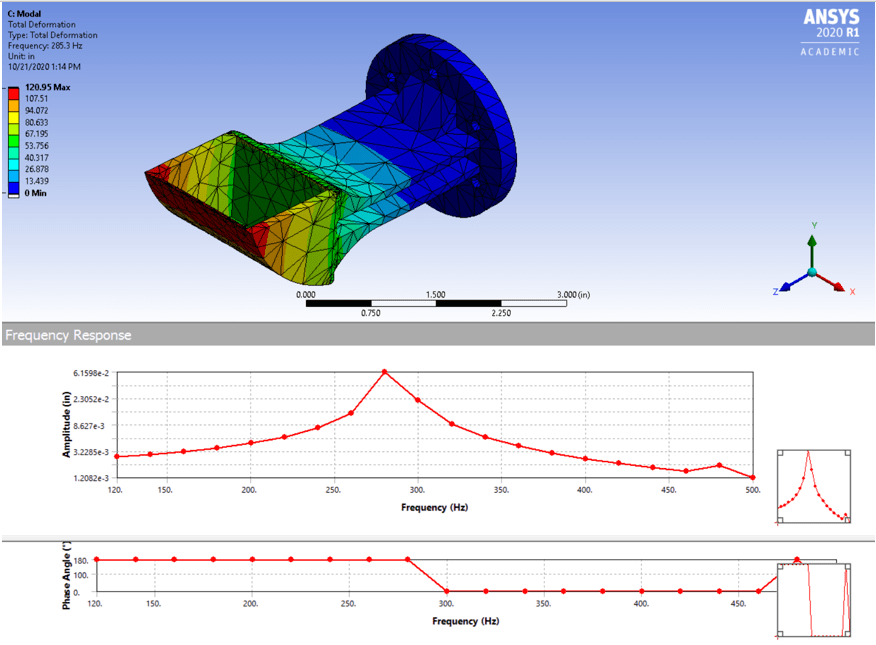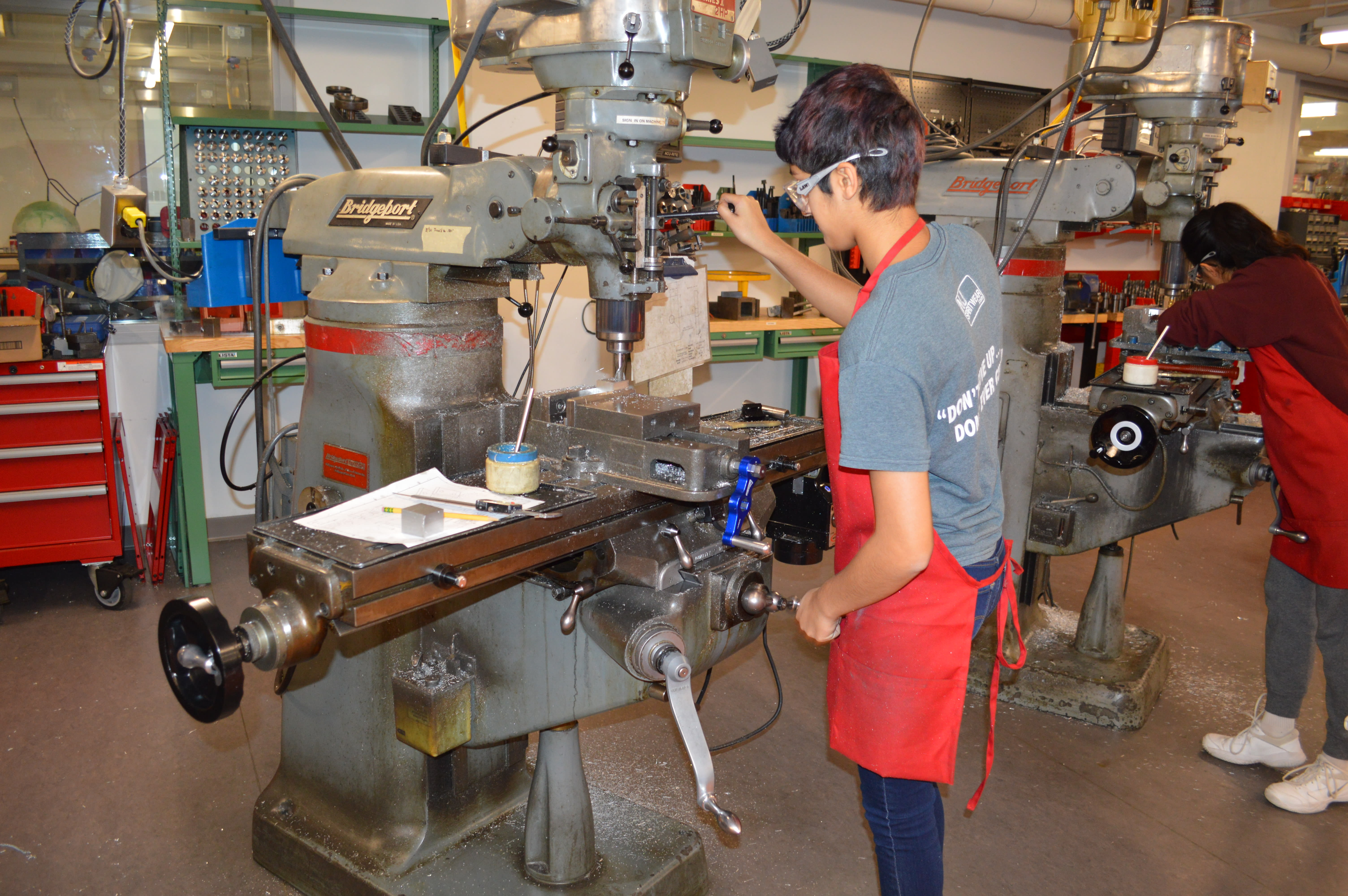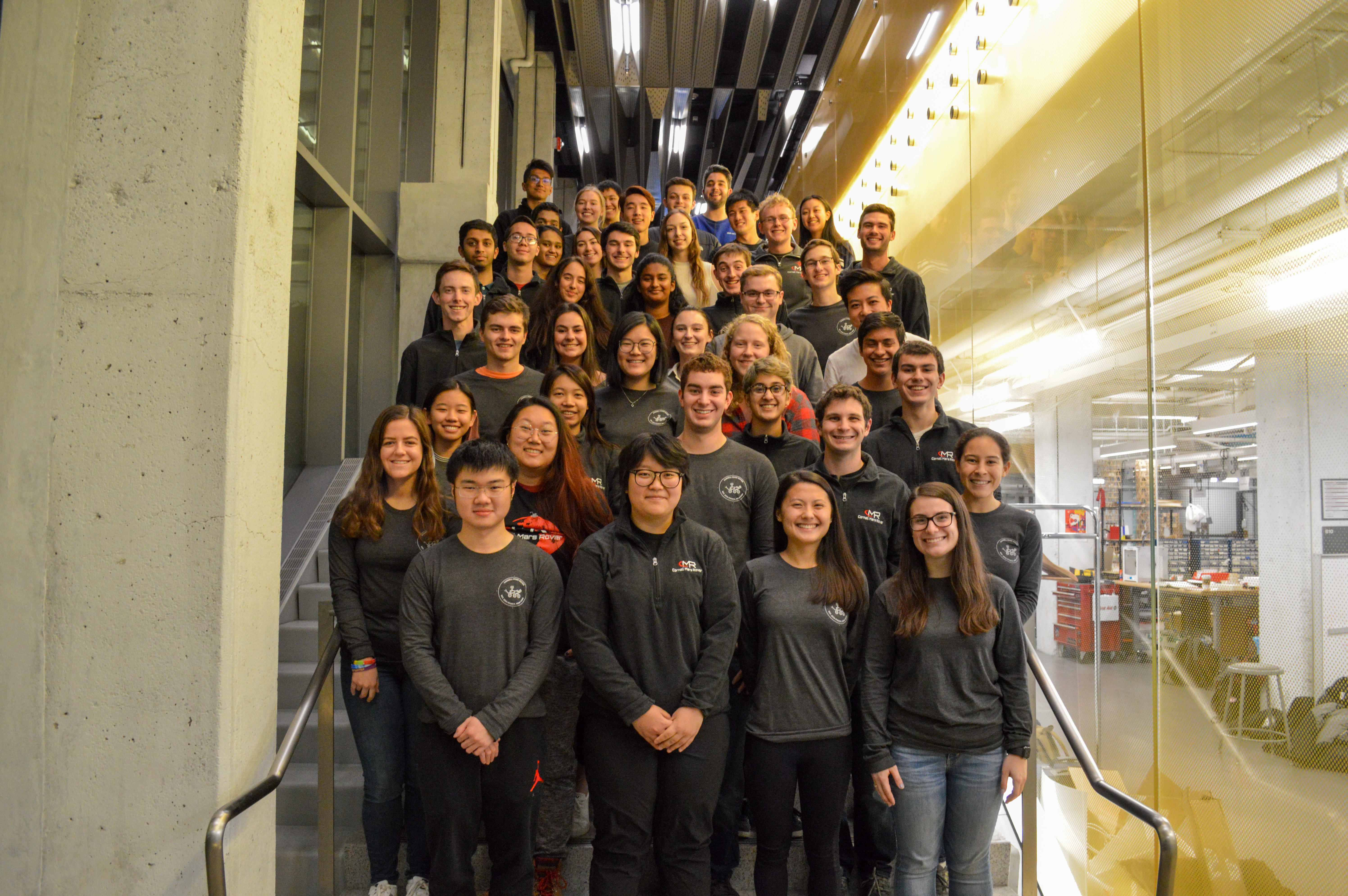© 2024 Cornell University, All Rights Reserved
About the Team
Cornell Mars Rover (CMR) is a premier student-run engineering team comprised of over 60 members from across Cornell's undergraduate colleges. Each year, CMR designs an innovative rover to compete in the international University Rover Challenge, in which the team tackles challenges such as autonomous navigation, on-site science experimentation, and extreme terrain traversal. Students work collaboratively to design, build, and test the rover, exploring cutting edge technologies such as machine learning, wireless communications, CNC, and 3D printing. We need your help to bring our designs to life!
Arm
The Arm Subteam builds the rover's 6 axis robotic manipulator, which is the rover's primary means to interact with its environment. All six of the joints are powered by high power brushless DC motors and custom designed and manufacturing cycloidal gearboxes with minimal backlash to enable computer control of the arm using Inverse Kinematics. One of the focuses this year is making the arm as simple to manufacture as possible to enable earlier integration and testing of the arm. This will give us time to fully troubleshoot the arm and its associated electrical and software components to a much larger degree than any past years, allowing us to greatly improve our performance in the Equipment Servicing and ERDM tasks.
AstroTech
The AstroTech Subteam is responsible for an onboard soil delivery and analysis system which detects for signs of life. The team is divided into 3 subsystems: collection, mixing, and dispensing/analyzing. The collection team will replace the arm end effector with a scoop and implement the rover's inverse kinematics functions to precisely scoop and deliver the soil from the ground to the mixing chamber. Then, the mixing team will agitate the water and dirt solution in the mixing chamber with a slider crank mechanism. Finally, the dispensing/analyzing team will manufacture a peristaltic pump to transport the soil and water mixture into test tubes filled with chemical tests. A camera in a light controlled environment will take photos of the test tubes to send to the science team at the base station to look for color changes that indicate signs of life.

Business
The Business Subteam is responsible for all other aspects that are needed to build a successful rover. This includes team finances, web design, graphic design, social media, video editing, and both public and sponsor outreach. This year, we are working with industry mentors to provide valuable feedback on subteam designs.
Drives
The Drives Subteam designs and manufactures the wheels, suspension, and frame such that the rover can traverse challenging competition terrain. We are also responsible for the electronics core to house the rover's hardware, as well as the camera mast to support cameras and antennas at a height of 3 feet above the frame. At the University Rover Challenge, our rover must navigate rocks, drops, and steep slopes up to 45 degrees. To do this, we are adapting a 6-wheel rocker-bogie suspension design and casting flexible airless tires to reduce mass and absorb loadings. We manufacture many of our components in-house and collaborate with the Testing Subteam to validate our designs prior to competition.

Software
The Software Subteam handles rover controls, path planning, user interfaces, and computer vision. Our projects this year include better controlling and maintaining the rover through graphical user interfaces, augmenting autonomous path planning using LIDAR and an enhanced computer vision system to guide our algorithms and streamlining the overall autonomy pipeline. This year, we are improving our custom brushless motor controllers to support the drives and arm subteams, as well as designing new custom boards to support the sensors, motors, and servos needed for the astrotech subteam.
Electrical
The Electrical Subteam develops the hardware responsible for running all systems on the rover. Our primary goal is to design flexible and robust hardware that can be adapted to changing mechanical designs while still supporting the software subteam’s requirements. Our system handles low level control of motors and sensors via PIC32 microcontrollers which are present on all boards, as well as power distribution across all electrical components. This year, we are improving our custom brushless motor controllers to support the drives and arm subteams, and have also made upgrades our power distribution and battery management systems.

Science
The Science Subteam’s focus is on the rover’s life detection capabilities. We design tests that allow us to determine the history of the surface that any particular soil or rock sample originated from. We create our test procedures so that the tests can be done autonomously, while also giving us accurate information regarding the presence of extant life or the past presence of extinct life within a particular sample.
Testing
The Testing Subteam was founded last year in order to focus on another major component of industry. We are designing tests and assembling test stands to ensure development of a successful rover in the spring semester. We are utilizing an array of sensors and arduino boards in order to measure strains and loads on the rover that we would normally estimate or only predict. This subteam provides mechanical engineers with a chance to work with electronics and coding, and provides controls engineers the chance to machine and design mechanical systems.
WE THANK YOU FOR YOUR SUPPORT!

A Donation of $5 - $49 will help our team purchase the base materials for the rover such as nuts, bolts, and aluminum.
A donation of $50 - $99 will help us purchase the hardware and software used to build the rover. These include everything from the onboard GPS to carbon fiber tubing.
A donation of $100 - $499 will help us machine the rover. This year, we hope to augment our machining with industry-level gear manufacturing and innovative wire EDM techniques
A donation of $500 - $999 will help us explore new brushless motors for the arm, an on-rover laboratory for science, and computer vision hardware for autonomous navigation.
A donation of $1000 - $1999 will help us fund our most ambitious projects, including a harmonic drives system, a carbon fiber arm, and GPU enhanced processing unit for AI navigation.
A donation of over $2000 will ensure CMR's ability to succeed for years to come. This will help outfit our team with cutting edge technologies from the edges of material, computer, and biological sciences.